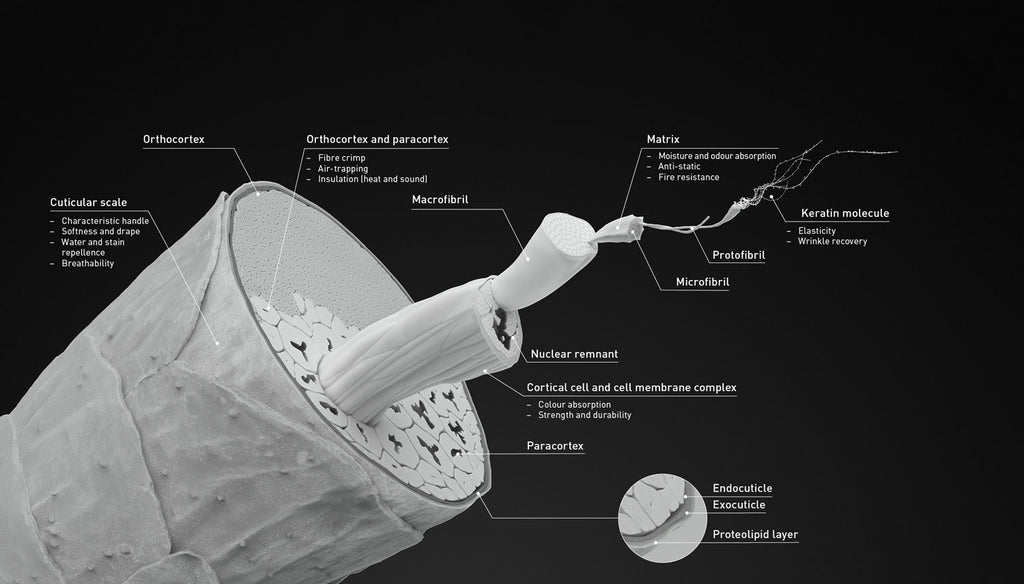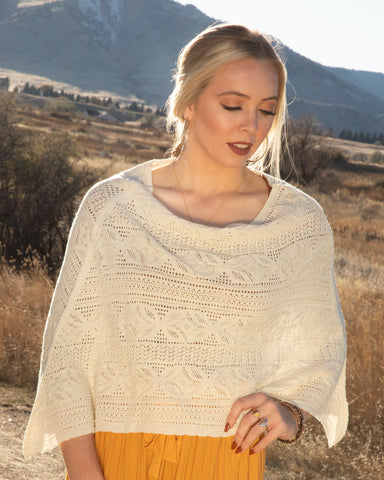The Anatomy of Wool
Wool is among the most versatile of natural fibers. Its amazing properties are well-known, but not found among many other natural fibers. The structure of a wool fiber consists of several different properties, each with unique functions.

Image: woolmark.com
- Cuticle – This is the outside protective layer. It’s layered with “scales” that overlap each other, much like tiles on a roof. The cuticle helps protect the fiber from water penetration due to a waxy coating. This creates the “water-repellent” property and resistance to water-based stains. Fascinating.
- The Cortex – These are the internal cells that will make up 90% of the entire fibre! Within the cortex are two main components: para-cortical and ortho-cortical. The two components expand in different ways when they absorb moisture, which creates the crimp in the wool. The para-cortical and ortho-cortical cells will form more randomly in courser wool which will lead to less crimp than in finer grade wools like our Mountain Merino®. The loft, spring, and overall “squishiness” of our premium wool yarn is a result of this high crimp fine wool.
- The Cortical Cells - These cells are held together by a cell membrane complex, like the mortar used to hold bricks together in a wall. The cell membrane creates strength in the fibre.
- Macrofibril – Inside the cortical cells are long filaments called macrofibrils’. Inside those, are finer filaments called microfibrils.
- Microfibril – Like mentioned above, these are long filaments within the matrix and microfibril. These act as steel rods to reinforce strength and flexibility within the fibre.
- Matrix – High sulfur proteins are contained in the matrix. Sulfur atoms attract water molecules which makes wool water absorbent. Wool can absorb up to 30% of its weight in water, which helps keep a person cool when wearing a wool garment. This area of the wool is also responsible for the fire-resistant and anti-static properties that make wool so unique.
- Keratin Molecule – These molecules are protein chains that coil in a helical shape, like a spring. They link each coil of the helix, helping to prevent stretching of the fibre. It also gives wool its flexibility, elasticity, and resilience. That helps keep wool fabrics wrinkle-free and gives the superior stretch needed for our unique Taiga Tot’s 100% wool children’s clothing.
Wool is an extremely complex and valuable fibre with so many fascinating properties. We are thankful for wool and the ability to take that precious raw fibre and transform it into finished garments like our 100% Mountain Merino® wool hoodies, wool throws, and other wool apparel and home décor.






Great project. 100% wool is so amazing, when you get to know really good wool.
Amazing fiber that high tech can’t beat! Thanks for great information. Always learning.
Leave a comment